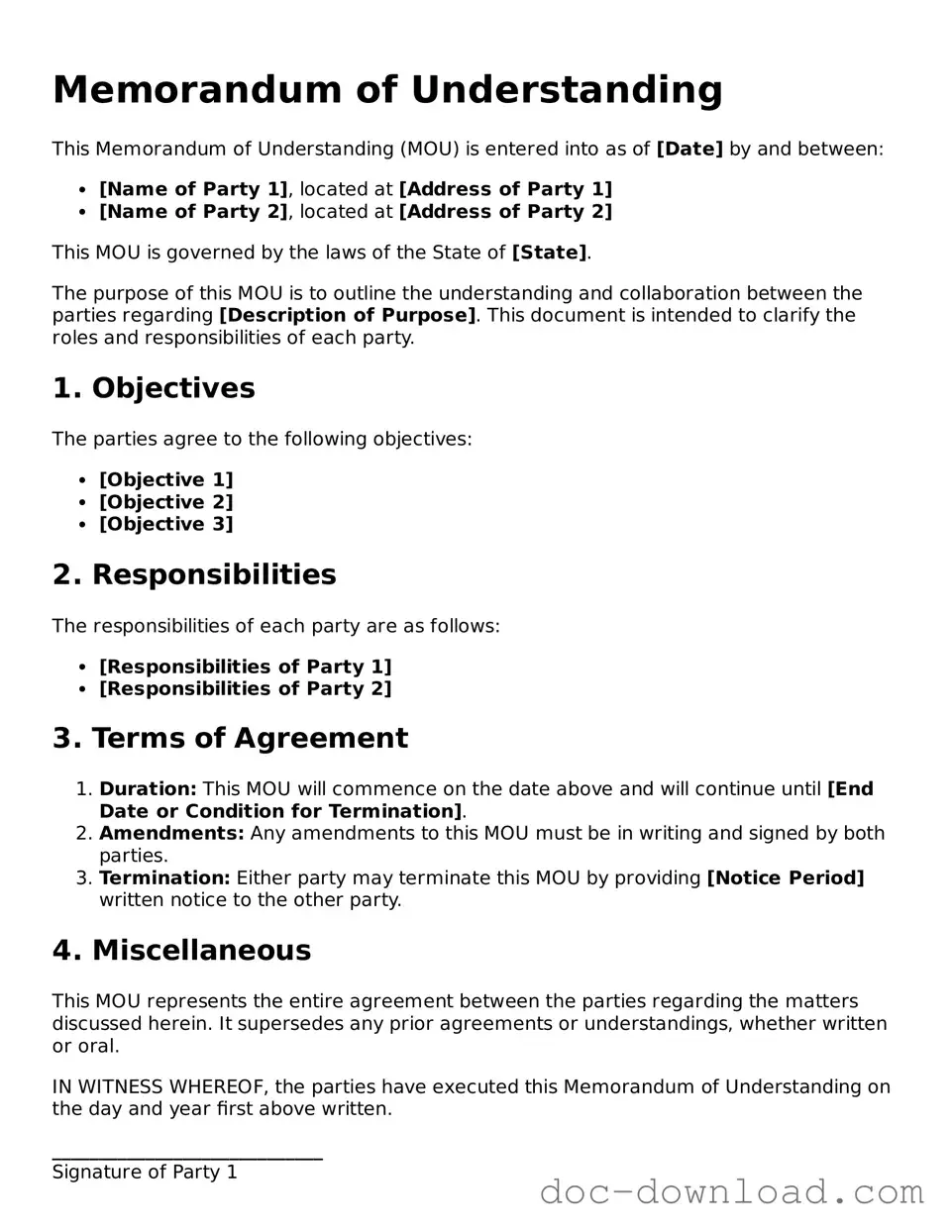A Letter of Intent (LOI) serves a similar purpose to a Memorandum of Understanding (MOU) as it outlines the preliminary agreement between parties. An LOI often expresses the intention to enter into a formal contract and can include key terms and conditions. While an MOU is typically non-binding, an LOI may contain binding elements, making it a bit more formal. Both documents aim to clarify the intentions of the parties involved and set the stage for further negotiations.
A Partnership Agreement is another document that shares similarities with an MOU. This type of agreement outlines the terms and conditions under which two or more parties will collaborate on a project or business venture. Unlike an MOU, which may be less formal and non-binding, a Partnership Agreement is legally binding and typically includes detailed provisions regarding profit sharing, responsibilities, and dispute resolution. Both documents emphasize mutual understanding and cooperation.
An Executive Summary is often created to provide a concise overview of a larger document, such as a business plan or proposal. While an MOU outlines the intentions and agreements between parties, an Executive Summary distills the essential points into a brief format. Both documents aim to communicate key information clearly and effectively, ensuring that all parties are on the same page before moving forward.
Understanding the nuances of a quick general bill of sale is essential for those engaging in transactions involving personal property. This form serves not only as proof of sale but also as a safeguard for both parties, ensuring that the details of the agreement are clear and legally recognized.
A Non-Disclosure Agreement (NDA) is similar in that it establishes a mutual understanding between parties regarding confidentiality. While an MOU outlines broader terms of collaboration, an NDA focuses specifically on the protection of sensitive information shared during discussions. Both documents are crucial in fostering trust and security between parties, ensuring that sensitive details remain confidential as negotiations proceed.
A Service Agreement outlines the terms under which services will be provided between parties. Like an MOU, it specifies the roles and responsibilities of each party but goes further by detailing the specific services to be rendered, payment terms, and timelines. Both documents aim to create clarity and understanding, but a Service Agreement is generally more comprehensive and legally binding.
A Collaboration Agreement is another document that resembles an MOU. This type of agreement is used when two or more parties decide to work together on a specific project or initiative. While an MOU may simply express intent, a Collaboration Agreement often includes specific roles, contributions, and expectations of each party. Both documents are designed to promote cooperation and outline the shared goals of the parties involved.
Finally, a Grant Agreement is akin to an MOU when it comes to establishing the terms of funding or support for a project. This document details the obligations of the grantor and grantee, including how funds will be used and reporting requirements. While an MOU may focus on general intentions, a Grant Agreement provides specific terms and conditions that must be adhered to, ensuring accountability and transparency in the use of funds.
